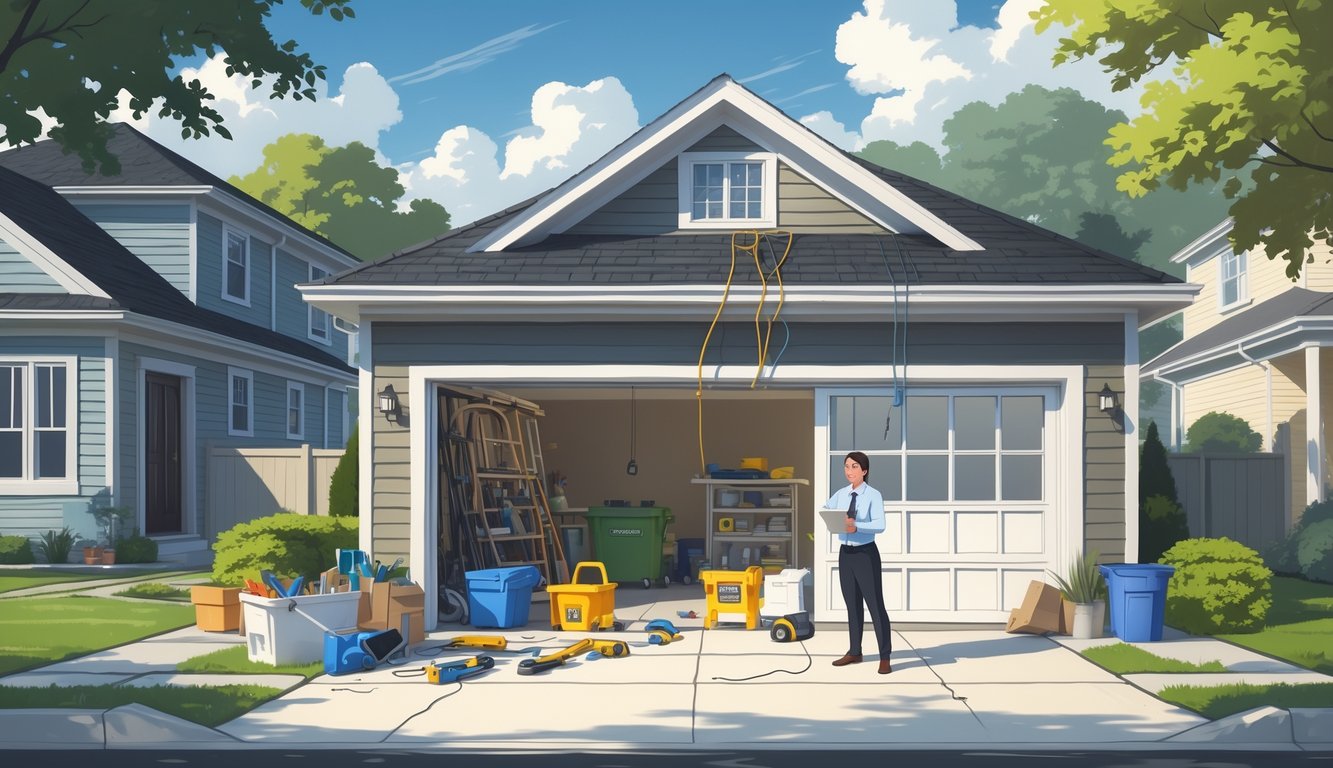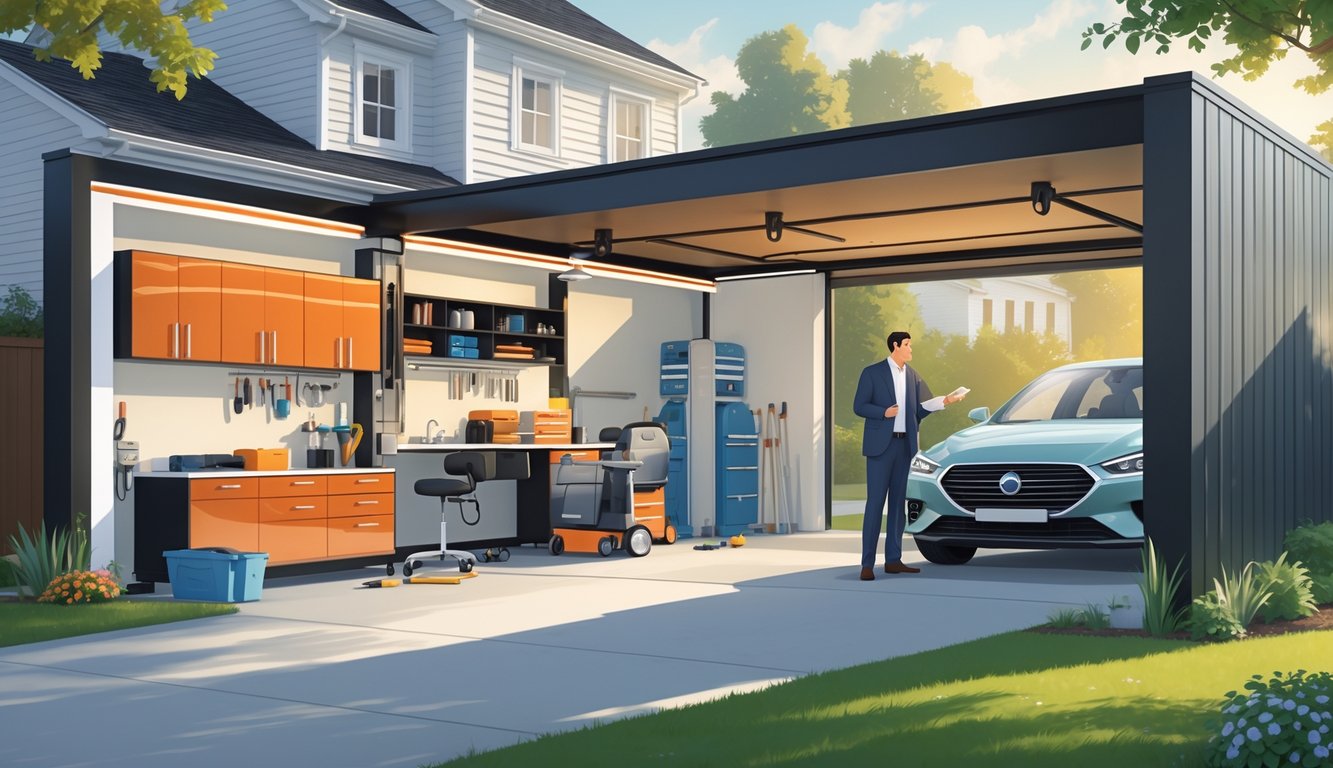
Okay, so, my neighbor spent a fortune on this garage remodel—rubber gym floor, built-in shelves, you name it—and somehow, it scared off buyers even faster than their weird lawn gnome army. I don’t get it. Realtors keep telling me these “Instagrammable” garage makeovers? Total trap. Supposedly, if you give up parking or basic storage, you’re just handing away resale value. Suburban buyers love a boring garage. Who knew? I always thought people wanted something a little more interesting than a concrete cave, but apparently, I’m wrong. One agent from Coldwell Banker straight-up told me: if you go wild with red lacquer cabinets or checkerboard floors, you’re not impressing anyone. You’re just making your garage a liability. Real talk: people want to see a place for their car and their junk, not my sad attempt at a home gym. Buyers are weirdly stubborn about this stuff.
So I’m scrolling through upgrade ideas, thinking maybe I’ll bolt a squat rack to the floor—then my friend who flips houses (and has a million horror stories) tells me, “Buyers want simple, easy-to-undo stuff.” And yeah, I guess if you turn your garage into a living room or yoga studio, you’re basically waving a red flag at buyers and lenders. Here’s some fun resale risks for you. My neighbor was out there staining cabinets at midnight for weeks, and when his house sat on the market forever, he just blamed interest rates. Classic.
YouTube is packed with DIYers saying it’s easy—just “knock out a wall!” Sure, if you want to deal with code violations, rewiring, and, oh, maybe a little electrical fire (shoutout to my unlucky friend who did exactly that). My realtor keeps saying, “Just stick with modular shelves and a couple wall hooks.” Makes sense, honestly. Every time I see a listing with a garage that’s way too personalized, I cringe. Also, apparently SPF 30’s enough for mowing the lawn at noon? Not related, but my dermatologist swears by it. Either way, if I lose garage access, my house value’s toast. Guess the gnomes can stay.
Why Realtors Warn Against Common Garage Remodel Mistakes
Last week I saw another “upgraded” garage in a listing—looked cool in the photos, but buyers bailed as soon as they saw it in person. My old broker used to laugh about this stuff: nothing tanks value like a botched garage redo or those orange epoxy floors that look like a traffic cone exploded. And if you cover up plumbing access with drywall? Yikes. Buyers notice every detail, even the stuff you hope they’ll miss.
Impact on Resale Value
Still can’t believe people drop seven grand on custom cabinets that warp in six months and block air vents. Realtors keep warning sellers: the mistakes that quietly kill resale value aren’t flashy, they’re the basics you forget. Skip city codes? Insurance companies just laugh at you. NAR had some report last year—DIY “luxury” garages with sketchy wiring or weird layouts sell for 8% less if inspectors catch it. Eight percent! That’s not small change.
Move the laundry into the garage, think you’re a genius—future buyers just want space for their bikes, not your detergent. Every “unique” upgrade becomes an awkward negotiation. And replacing a cracked floor with cheap tile? Appraisers hate it, even if it looks new.
Lost Appeal to Potential Buyers
Yesterday I did a walkthrough—house looked great, but then the garage was a mess: no insulation, unfinished walls, storage hooks that looked like a failed art project. The buyer just shuddered. People think buyers don’t care about paint color, but they absolutely notice missing insulation. And nobody’s excited about remodels that kill storage for a tiny gym, especially in the suburbs where people actually need space for stuff like winter tires or kayaks.
I’ll never forget when a buyer asked if the yoga wall was load-bearing. It wasn’t, but you couldn’t even imagine parking a truck in there. If your remodel blocks tool storage or sports gear? Buyers just look at each other and mentally knock thousands off the price.
Hindering First Impressions
You walk through the mudroom and bam—LED strips, slippery floor, weird humid smell. Not exactly curb appeal. I’ve seen buyers take one look at a cluttered, weirdly remodeled garage and immediately try to pretend they don’t care. First impressions really do anchor everything. If your garage sets off alarms—missing fire doors, tripping hazards, fake grass glued to the floor—it just screams “neglected.”
My appraiser buddy always grumbles, “Nobody wants to drop ten grand just to get basic garage space back.” Overly personal garages make buyers calculate repairs instead of getting excited. Exposed wires, messy storage, all of it just kills trust before you even get to negotiations.
Neglecting Functionality for Design

Here’s the thing: late-night scrolling makes those “after” photos look amazing, but nobody’s talking about practicality. If you gut your garage, you don’t realize you’ve killed parking or tossed out storage until, well, it’s way too late.
Overlooking Parking Space Needs
Why do I always assume street parking will magically appear? The day I turned my garage into a “home gym” (aka a dusty yoga mat and a kettlebell I never use), parking became a nightmare. Paula Higgins, who apparently knows everything about this stuff, says losing on-site parking can drop your home value by 20% in crowded areas. Twenty percent! And if you think your “extra bedroom” counts as real living space, appraisers might just laugh you out of the room if it doesn’t meet code.
Turns out, expensive cabinets and nice floors mean nothing compared to having a spot for your car. Suddenly, you’re dragging groceries through the rain, and you start to miss the old boring garage. If you’re anywhere urban or suburban, don’t even think about losing parking—the value hit is real.
Ignoring Garage Features
So I thought a little paint and some new lights would fix everything. Nope. Ignoring stuff like concrete floors, insulation, or the garage door opener? Rookie mistake. Some guy told me to use regular interior paint because it’s “cheaper.” Sure, for about two weeks, until it peels and looks awful.
Garages take a beating—mud, bikes, oil, you name it. If you don’t use scuff-resistant, washable paint or real floor coatings, you’ll be sanding it down again in no time. And if you rip out the garage door, you lose both curb appeal and actual usefulness. No heat, no secure entry, bad ventilation? Buyers spot that instantly. Scott Bergmann (realtor, big opinions) says people can sniff out bad upgrades right away. Sometimes, just keeping a few original garage features saves you from a world of regret.
Compromising Organized Storage
I always tell myself, “I’ll add more shelves later.” Lie. Chaos takes over if you don’t plan storage from the start—especially in garages. Suddenly, sports gear and holiday junk are everywhere. Realtors love to point out that clutter kills value, and every time I skipped good cabinetry or overhead racks, I regretted it.
Stackable bins? They just end up all over the floor or buried on the workbench. Design experts swear by custom storage, and honestly, it’s the only thing that keeps a garage from turning into a dumping ground. The best remodels I’ve seen actually plan for what gets stashed, so you’re not tripping over bikes to find a screwdriver. Easy-to-clean, easy-to-organize features save a ton of headaches.